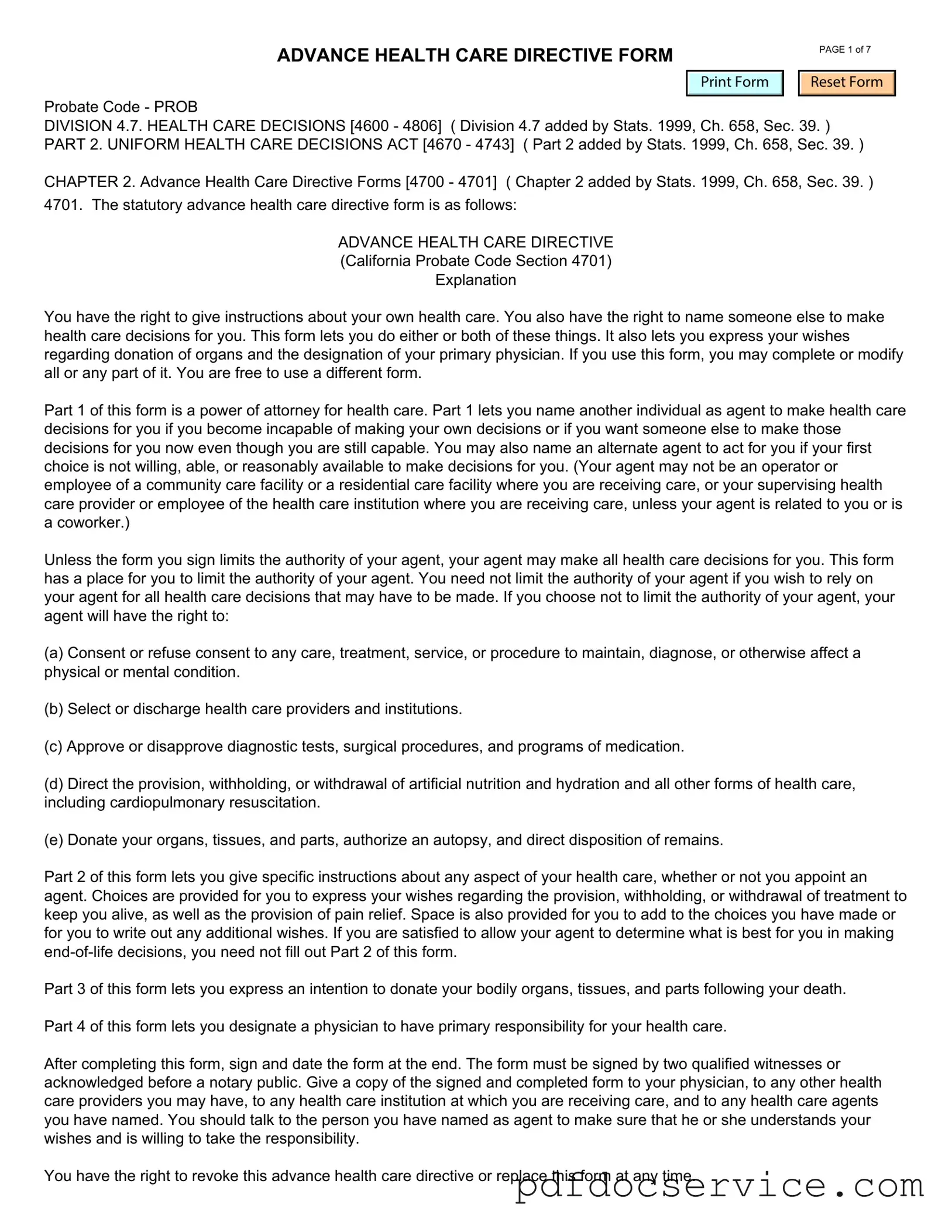What is a California Advanced Health Care Directive?
A California Advanced Health Care Directive is a legal document that allows individuals to outline their preferences for medical treatment in case they become unable to communicate their wishes. It combines two key components: a health care power of attorney and a living will. This directive ensures that your healthcare decisions are respected and followed by medical professionals and loved ones.
Who can create an Advanced Health Care Directive?
Any adult who is 18 years or older and is of sound mind can create an Advanced Health Care Directive in California. This includes individuals who want to express their medical treatment preferences or appoint someone to make healthcare decisions on their behalf if they are incapacitated.
What are the key components of the directive?
The directive typically includes:
-
Appointment of an Agent:
You can designate a trusted person to make healthcare decisions for you if you cannot do so.
-
Health Care Instructions:
You can specify your wishes regarding medical treatments, such as life-sustaining measures, organ donation, and palliative care.
-
Alternate Agents:
You may also name alternate agents in case your primary agent is unable or unwilling to act on your behalf.
How do I complete the Advanced Health Care Directive?
To complete the directive, follow these steps:
-
Obtain the form: You can find the California Advanced Health Care Directive form online or through healthcare providers.
-
Fill out the form: Clearly indicate your healthcare preferences and appoint an agent.
-
Sign the document: Your signature must be witnessed by at least one adult who is not your agent or a relative.
-
Distribute copies: Share the completed directive with your healthcare provider, agent, and family members.
Can I change or revoke my Advanced Health Care Directive?
Yes, you can change or revoke your Advanced Health Care Directive at any time, as long as you are of sound mind. To make changes, simply complete a new directive and distribute it to the relevant parties. To revoke the directive, you can destroy the document or provide a written statement indicating your intention to revoke it.
What happens if I do not have an Advanced Health Care Directive?
If you do not have an Advanced Health Care Directive and become unable to make healthcare decisions, California law will determine who can make those decisions on your behalf. This may lead to conflicts among family members or may not align with your personal wishes. Having a directive in place can help avoid confusion and ensure your preferences are honored.
Is an Advanced Health Care Directive the same as a Do Not Resuscitate (DNR) order?
No, an Advanced Health Care Directive is not the same as a Do Not Resuscitate (DNR) order. A DNR order specifically instructs medical personnel not to perform CPR if your heart stops or you stop breathing. While the Advanced Health Care Directive can include similar wishes regarding life-sustaining treatment, it covers a broader range of healthcare decisions. It's important to discuss your wishes regarding both documents with your healthcare provider.
